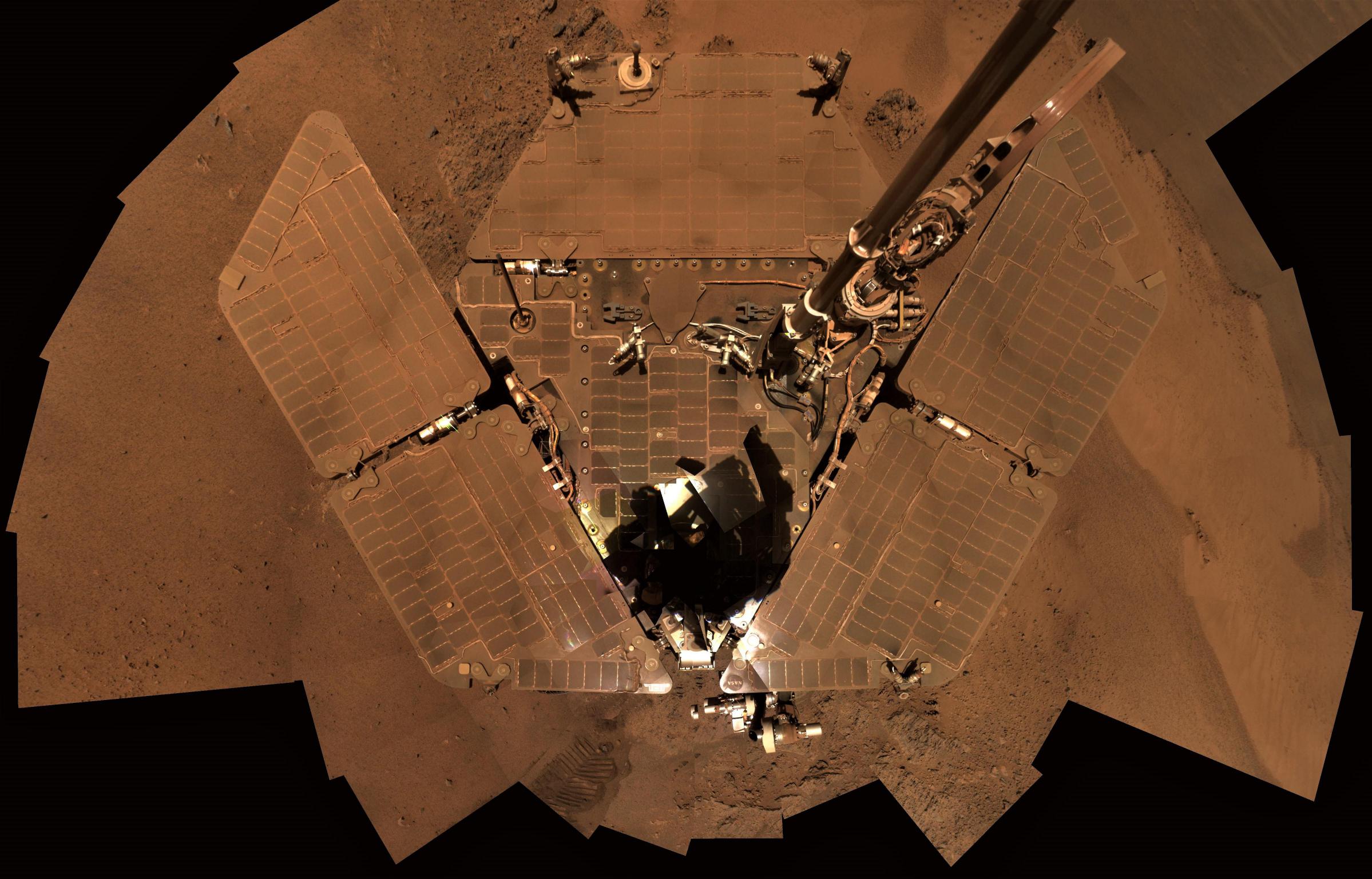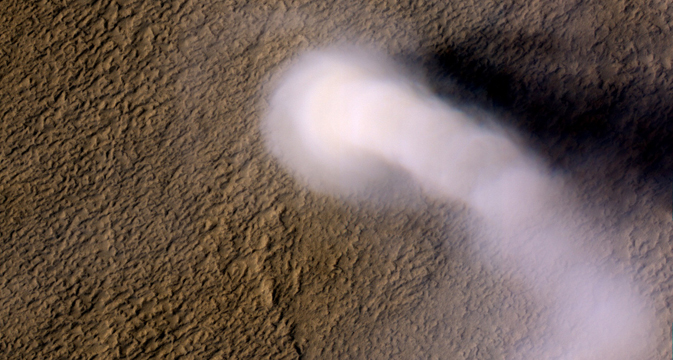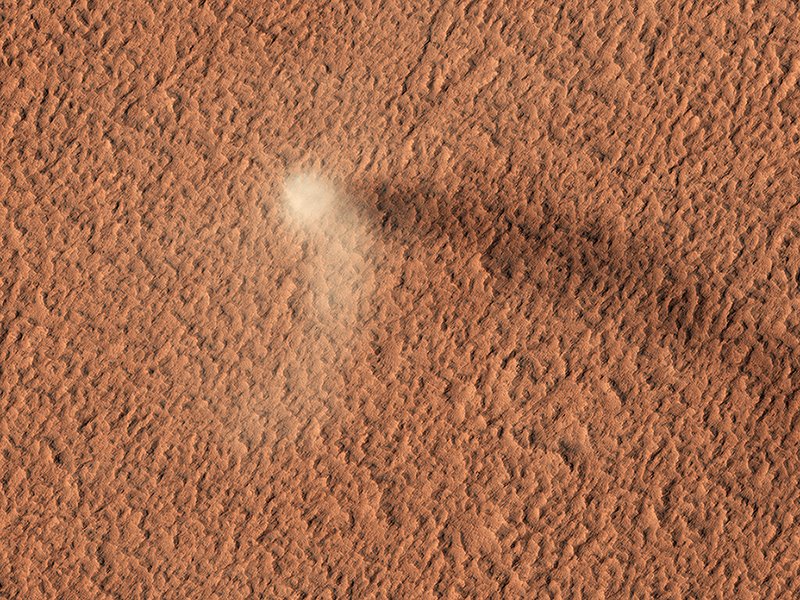Dust devils are pretty common on Mars – the Red Planet is, after all, a very dusty and windy place. What’s a bit more rare is capturing one of the whirling devils on film. That’s because they fade away nearly as quickly as they appear.
But in October 2019, NASA’s Mars Reconnaissance Orbiter managed to snap a photo of a massive dust devil in action, courtesy of the Mars Reconnaissance Orbiter’s High Resolution Imaging Science Experiment (HiRISE), a powerful camera that’s been snapping photos of the Martian surface since 2006.
NASA’s first glimpse of one of these dust storms came in 1971 when the Mariner 9 spacecraft — the first to orbit another planet — arrived at the red planet. Since then, we’ve seen quite a few of these dusty spectacles global storms: in 1977 (twice), 1982, 1994, 2001, 2007 and 2018.

In 2018, we lost the Opportunity rover to the strongest dust storm ever observed on Mars. It blotted out nearly all of the sun’s light for several weeks, turning day into night and preventing the rover from being able to charge its batteries. (Opportunity and its twin, Spirit, ran on solar power, as opposed to Curiosity and the Mars 2020 rover, which run on nuclear power.)
Martian dust storms are common, especially at specific times in the year, like during the southern hemisphere’s spring and summer. Localized storms tend to last a couple of days and can cover regions of the planet the size of the United States. But planet-encircling ones are a different story.
These massive, global storms are usually unpredictable, and can linger for months at a time. “We still don’t know what drives the variability, but the 2018 storm gives another data point,” says Scott Guzewich, an atmospheric scientist at NASA’s Goddard Space Flight Center in Greenbelt, Maryland, who’s a lead in NASA’s dust storm investigation.

Dust devils are rotating columns of air and dust that form when hot air from the surface rises. The current of air created forms a whirlwind, which can be useful for clearing off solar panels on spacecraft as they pass over.
As we move towards potential human missions we need to know how the dust will affect astronauts as well as their equipment. Understanding how often these phenomena occur will be extremely helpful for future missions.
During the dust storm of 2018, Curiosity was able to collect data about the storm, watching as its effects were felt half a world away from where Opportunity sat, hunkered down and hibernating.
Curiosity discovered that dust devils disappear during a dust storm, which happens to be when we need them the most. And they’re gone for several months afterwards as well. This is because the storm interrupts the wind-generating processes that spawn the dust devils.
According to Guzewich, understanding a global storm’s impact on dust devils is a crucial component in planning how to manage equipment during future Mars missions. “You need to be prepared to go a while before your next dust devil passes over and cleans you off,” he said.

Researchers at the University of Arizona recently published details on a newly photographed dust devil, which formed on the volcanic plains of Amazonis Planitia.
According to the HiRISE imaging team, the core of the dust devil is 164 feet (50 meters) wide, and probably about 2,32 feet (650 meters) tall. As massive as it sounds, there are even larger ones whirling around.
In March 2012, HiRISE took a photo of an active dust devil that was a whopping 12 miles (20 kilometers) tall. But was only slightly wider than the most recent one, at just over 229 feet (70 meters) wide.
For the first time, humanity has a fleet of spacecraft orbiting Mars as well as one rover roaming the surface right now (with two more to follow in the coming months). With their help, scientists will be able to better understand this puzzling phenomenon.

(adsbygoogle = window.adsbygoogle || []).push({});
<!–
–>
var disqus_shortname = «teslarati»;
var disqus_title = «Martian dust storms are driving away spacecraft-saving dust devils»;
var disqus_url = «https://www.teslarati.com/martian-dust-storms-spacecraft-dust-devils/»;
var disqus_identifier = «teslarati-128131»;

